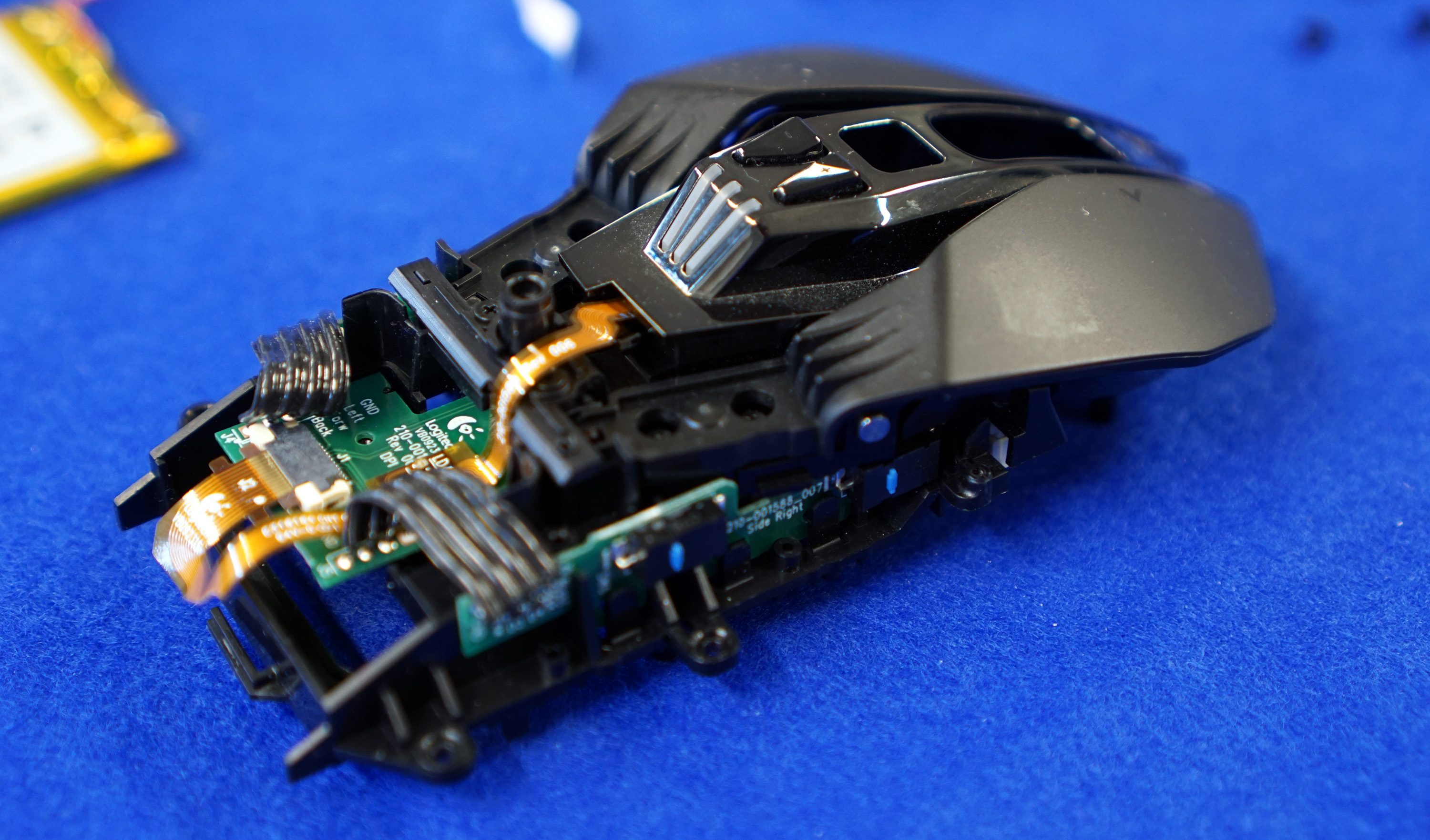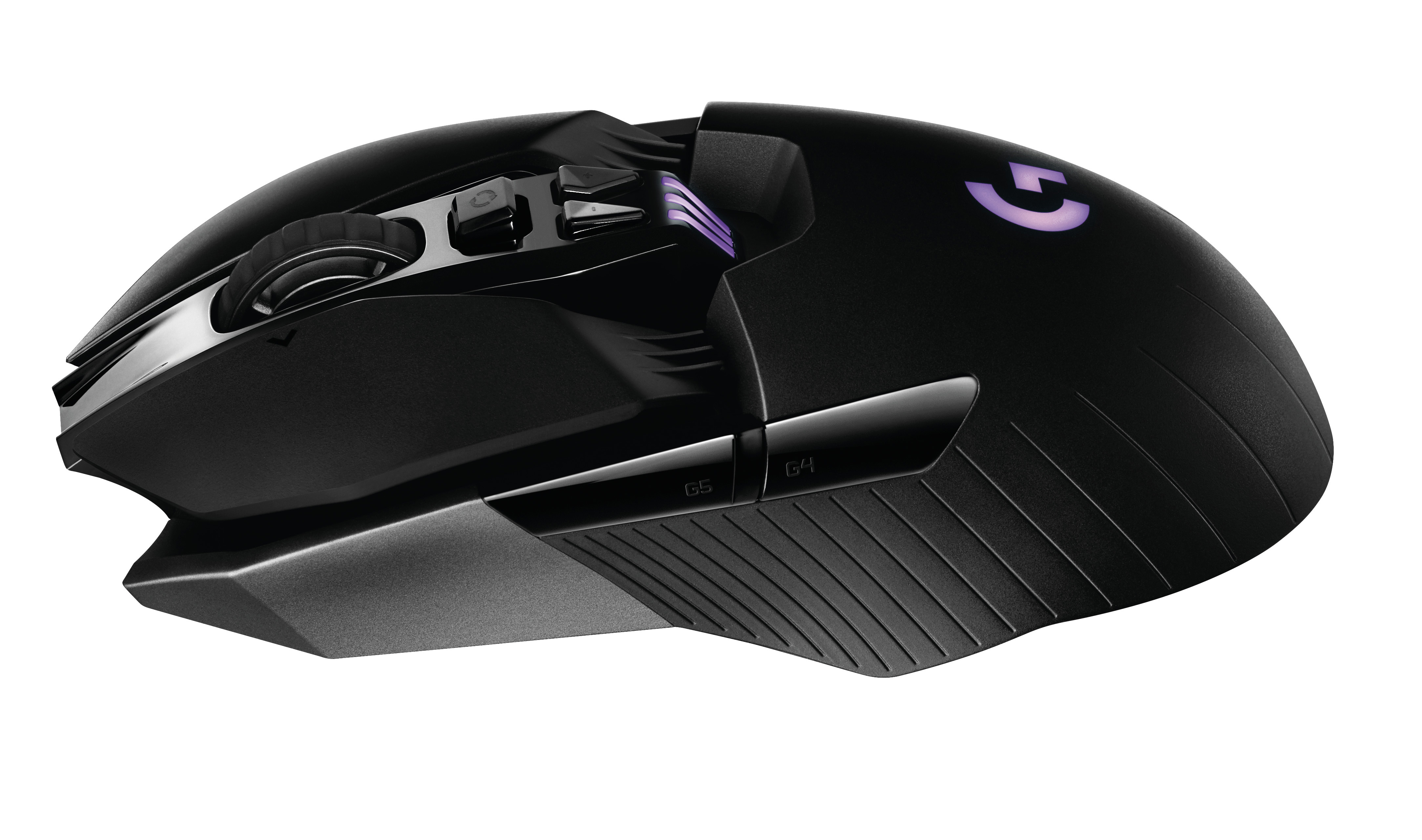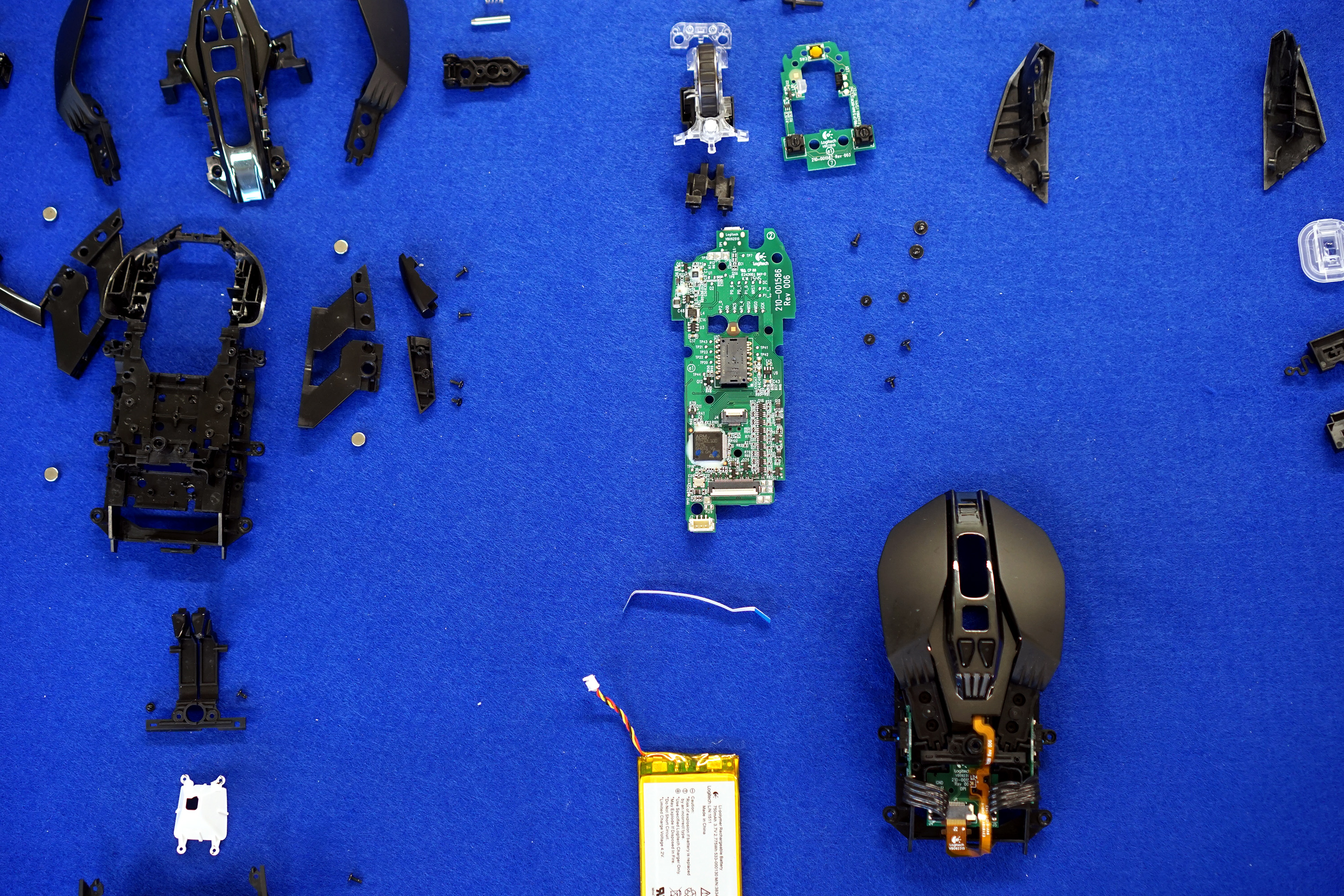How Logitech aims to prove wireless latency is a thing of the past

There’s a saying that it’s a poor workman who blames his tools, but PC gamers who tried wireless mice in the early days of wireless technology know that sometimes your tools can ruin a perfect headshot and cost you a match. There are many things that can go wrong with wireless, but batteries dying mid-game and latency from competing 2.4GHz signals sending your cursor jittering across the screen are the worst of them. One interruption like that is enough to make you swear off wireless for life. But just as the wi-fi of today is enormously faster and more reliable than the 802.11g of a decade ago, so is the wireless technology available in today’s gaming mice—especially if, like Logitech, you have nearly three years and $600,000 in RF testing equipment at your disposal to build a brand new flagship mouse.

Features: New left/right click pivot switch, hyper-fast scroll wheel (with tilt click), removable thumb buttons
Weight: 107 grams
Battery life: 24 hours use (RGB, 1000Hz polling rate), 32 hours (no RGB)
Sensor: PMW-3366
DPI: 200-12,000
Price: $150 MSRP
Available: April
“My goal was to make a mouse that would bust all the myths about wireless, to the point where there was no reason to not use a wireless mouse,” product manager Chris Pate told me. “I’m not trying to sell this to professional gamers. What I’m trying to do is make a product that is a wireless gaming mouse that has no credible complaints about it. That competitive professional gamers can use in first person shooters and win.”
This is how Chris Pate introduced me to the G900 Chaos Spectrum, an ambidextrous mouse that Logitech has been building for nearly three years, and building towards even longer. To prove that wireless no longer deserves its stigma, Logitech set out to build a mouse that outperformed its competitors’ (and even some of its own) wired mice with a faster click, a better sensor, and a lighter body.
Logitech invited journalists to its headquarters in Switzerland to see its testing equipment in action, with the G900 matched up against actual competing products. Part of its aim was to prove that the G900 was a better mouse, but the larger goal was to prove that wireless feels every bit as good as wired. To be a hit, the G900 has to march uphill in the snow, the refrain “corded mice are always better” wrapped around its legs and weighing it down.
“You can't just retrofit wireless onto an existing sensor architecture without having extreme compromises in one direction or another."
The G900’s first key component is its PMW-3366 optical sensor, which Logitech first introduced with the G502 Proteus Core in early 2014. Well before the G502 was released, Logitech was already thinking about a future wireless gaming mouse, senior engineer François Morier told me. Morier worked with sensor company Pixart to design the sensor to perform well for a wireless mouse, too. Despite beating out older sensors in accuracy even at up to 12,000 DPI and doing away with various tracking issues, it’s a smaller, lower-power sensor package.
“We had cordless in mind since 2010 for gaming,” Morier said. “Since then we started a new generation of sensors. … When we designed the [PMW-3366], we had in mind that we wanted it to be cordless. So we understand that we have to be power-frugal, in a way. We cannot waste power in every direction. So we made observations on the first generation cordless sensor we made, and from this one we say ‘we'll improve this point, and this point,’ but we didn't want to waste any kind of power in items that were already good enough. The goal was really to understand what makes sense to be improved, what would be observable, something that the user needs, and what is just putting a higher number on the box, which is just stupid.”

Morier has strong feelings on the “DPI wars,” the race to put a higher DPI number on the box of the mouse, which we previously talked about when I wrote an article on gaming mouse myths.
Keep up to date with the most important stories and the best deals, as picked by the PC Gamer team.
Chris Pate, who’s overseen the G900 and Logitech’s other recent gaming mice, added a bit more on Morier’s role with the new mouse.
“With 3366, one of the most important things that Francois did when he was speccing it out and helping to make sure that it was being developed properly, was to ensure that the wireless performance was strong,” he said. “You can't just retrofit wireless onto an existing sensor architecture without having extreme compromises in one direction or another. The development of G900 has been about validating that all of this stuff that was put into 3366 to enable great wireless performance and power consumption was actually functioning the way it was supposed to.”

Wes has been covering games and hardware for more than 10 years, first at tech sites like The Wirecutter and Tested before joining the PC Gamer team in 2014. Wes plays a little bit of everything, but he'll always jump at the chance to cover emulation and Japanese games.
When he's not obsessively optimizing and re-optimizing a tangle of conveyor belts in Satisfactory (it's really becoming a problem), he's probably playing a 20-year-old Final Fantasy or some opaque ASCII roguelike. With a focus on writing and editing features, he seeks out personal stories and in-depth histories from the corners of PC gaming and its niche communities. 50% pizza by volume (deep dish, to be specific).

